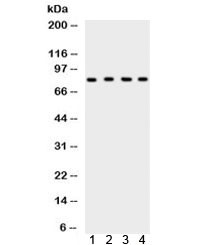Cookie-Einstellungen
Diese Website benutzt Cookies, die für den technischen Betrieb der Website erforderlich sind und stets gesetzt werden. Andere Cookies, die den Komfort bei Benutzung dieser Website erhöhen, der Direktwerbung dienen oder die Interaktion mit anderen Websites und sozialen Netzwerken vereinfachen sollen, werden nur mit Ihrer Zustimmung gesetzt.
Konfiguration
Technisch erforderlich
Diese Cookies sind für die Grundfunktionen des Shops notwendig.
"Alle Cookies ablehnen" Cookie
"Alle Cookies annehmen" Cookie
Ausgewählter Shop
CSRF-Token
Cookie-Einstellungen
FACT-Finder Tracking
Individuelle Preise
Kundenspezifisches Caching
Session
Währungswechsel
Komfortfunktionen
Diese Cookies werden genutzt um das Einkaufserlebnis noch ansprechender zu gestalten, beispielsweise für die Wiedererkennung des Besuchers.
Facebook-Seite in der rechten Blog - Sidebar anzeigen
Merkzettel
Statistik & Tracking
Endgeräteerkennung
Kauf- und Surfverhalten mit Google Tag Manager
Partnerprogramm

| Artikelnummer | Größe | Datenblatt | Manual | SDB | Lieferzeit | Menge | Preis |
|---|---|---|---|---|---|---|---|
| NSJ-R31953 | 100 µg | - | - |
3 - 10 Werktage* |
755,00 €
|
Bei Fragen nutzen Sie gerne unser Kontaktformular.
Bestellen Sie auch per E-Mail: info@biomol.com
Größere Menge gewünscht? Bulk-Anfrage
Bestellen Sie auch per E-Mail: info@biomol.com
Größere Menge gewünscht? Bulk-Anfrage
0.5mg/ml if reconstituted with 0.2ml sterile DI water. XRCC5 (X-ray Repair, Complementing... mehr
Produktinformationen "Anti-Ku80"
0.5mg/ml if reconstituted with 0.2ml sterile DI water. XRCC5 (X-ray Repair, Complementing Defective, In Chinese Hamster, 5), also known as Ku80 or Ku86, is a protein that in humans, is encoded by the XRCC5 gene. The XRCC5 gene encodes the 80-kD subunit of the Ku autoantigen, a heterodimer which contributes to genomic integrity through its ability to bind DNA double-strand breaks and facilitate repair by the nonhomologous end joining (NHEJ) pathway. The XRCC5 gene is mapped to 2q35. Human colon cancer cells heterozygous for Ku86 are haploinsufficient with an increase in polyploid cells, a reduction in cell proliferation, elevated p53 levels, and a slight hypersensitivity to ionizing radiation. Functional inactivation of the second Ku86 allele results in cells with a drastically reduced doubling time. The Ku86 locus is essential in human somatic tissue culture cells by experiments demonstration. A rare microsatellite polymorphism in XRCC5 is associated with cancer in patients of varying radiosensitivity. Protein function: Single-stranded DNA-dependent ATP-dependent helicase. Has a role in chromosome translocation. The DNA helicase II complex binds preferentially to fork-like ends of double-stranded DNA in a cell cycle-dependent manner. It works in the 3'-5' direction. Binding to DNA may be mediated by XRCC6. Involved in DNA non-homologous end joining (NHEJ) required for double-strand break repair and V(D)J recombination. The XRCC5/6 dimer acts as regulatory subunit of the DNA-dependent protein kinase complex DNA-PK by increasing the affinity of the catalytic subunit PRKDC to DNA by 100-fold. The XRCC5/6 dimer is probably involved in stabilizing broken DNA ends and bringing them together (PubMed:12145306, PubMed:20383123, PubMed:7957065, PubMed:8621488). The assembly of the DNA-PK complex to DNA ends is required for the NHEJ ligation step. In association with NAA15, the XRCC5/6 dimer binds to the osteocalcin promoter and activates osteocalcin expression (PubMed:20383123). The XRCC5/6 dimer probably also acts as a 5'-deoxyribose-5-phosphate lyase (5'-dRP lyase), by catalyzing the beta-elimination of the 5' deoxyribose- 5-phosphate at an abasic site near double-strand breaks. XRCC5 probably acts as the catalytic subunit of 5'-dRP activity, and allows to 'clean' the termini of abasic sites, a class of nucleotide damage commonly associated with strand breaks, before such broken ends can be joined. The XRCC5/6 dimer together with APEX1 acts as a negative regulator of transcription (PubMed:8621488). [The UniProt Consortium]
| Schlagworte: | Anti-Ku86, Anti-Ku80, Anti-TLAA, Anti-CTC85, Anti-CTCBF, Anti-G22P2, Anti-XRCC5, EC=3.6.4.-, Anti-Nuclear factor IV, Anti-DNA repair protein XRCC5, Anti-Thyroid-lupus autoantigen, Anti-86 kDa subunit of Ku antigen, Anti-Lupus Ku autoantigen protein p86, K |
| Hersteller: | NSJ Bioreagents |
| Hersteller-Nr: | R31953 |
Eigenschaften
| Anwendung: | WB, IHC (paraffin) |
| Antikörper-Typ: | Polyclonal |
| Konjugat: | No |
| Wirt: | Rabbit |
| Spezies-Reaktivität: | human, mouse, rat |
| Immunogen: | Amino acids FSEEQRFNNFLKALQEKVEIKQLNHFWE of human Ku80 were used as the immunogen for the Ku80 antibody. |
| Format: | Purified |
Datenbank Information
| KEGG ID : | K10885 | Passende Produkte |
| UniProt ID : | P13010 | Passende Produkte |
| Gene ID | GeneID 7520 | Passende Produkte |
Handhabung & Sicherheit
| Lagerung: | -20°C |
| Versand: | -20°C (International: -20°C) |
Achtung
Nur für Forschungszwecke und Laboruntersuchungen: Nicht für die Anwendung im oder am Menschen!
Nur für Forschungszwecke und Laboruntersuchungen: Nicht für die Anwendung im oder am Menschen!
Hier folgen Informationen zur Produktreferenz.
mehr
Hier kriegen Sie ein Zertifikat
Loggen Sie sich ein oder registrieren Sie sich, um Analysenzertifikate anzufordern.
Bewertungen lesen, schreiben und diskutieren... mehr
Kundenbewertungen für "Anti-Ku80"
Bewertung schreiben
Loggen Sie sich ein oder registrieren Sie sich, um eine Produktbewertung abzugeben.
Zuletzt angesehen









